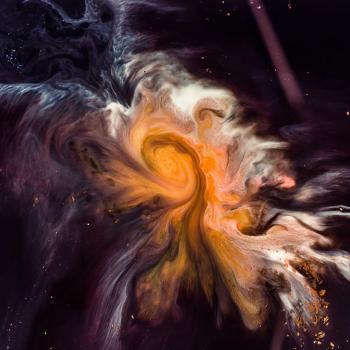Rudolf Otto presents the idea of the holy in a term he suessed: the numinous. It’s the feeling of profound wonder, as described by C.S Lewis. It’s the goosebumps we get when walking through a wood at twilight, or finishing a haunting novel, or the overwhelming sensation felt during a time of sacred worship.
The numinous is one of beauty’s vehicles. I’m always searching for the ways in which they connect; how one incites the other. Beauty and the numinous both reach beyond our rational sensibilities and send us beyond ourselves. They fire the imagination, and stir our emotions.
Recently I found an article from The New Yorker that focused on the life and work of G.K. Chesterton. In it the writer notices two epiphanies that shaped Chesterton as a man and writer: how story and the world are equally numinous and that the beautiful is always small.
Chesterton was a master at seeing the world behind things. He doesn’t make the connection between the numinous and the beautiful here per se. Rather, we see the value he placed on each. A reminder to nurture our perspective of the world, of our own lives, and give ourselves space to see both the numinous and the beautiful.
Chesterton’s autobiography, begun in the late twenties and published just after his death, in 1936, tells his early story more or less accurately. Born into a conventional and unreligious family in suburban London in 1874, he had an extraordinary sensitivity to the secret life of things.
In a chapter titled “The Man with the Golden Key,” perfect in its delicate unwinding of the tension between truth and play in a child’s life, he explains that the transforming event of his early life was watching puppet shows in a toy theatre that his father had made for him. (The man with the golden key was a prince whose purpose he can no longer recall in a play whose plot he can no longer remember; but the purposefulness and romance of the figure stay with him.)
Chesterton’s point is that childhood is not a time of illusion but a time when illusion and fact exist (as they should) at the same level of consciousness, when the story and the world are equally numinous:
If this were a ruthless realistic modern story, I should of course give a most heart-rending account of how my spirit was broken with disappointment, on discovering that the prince was only a painted figure. But this is not a ruthless realistic modern story. On the contrary, it is a true story. And the truth is that I do not remember that I was in any way deceived or in any way undeceived.
The whole point is that I did like the toy theatre even when I knew it was a toy theatre. I did like the cardboard figures, even when I found they were of cardboard. The white light of wonder that shone on the whole business was not any sort of trick. . . . It seems to me that when I came out of the house and stood on the hill of houses, where the roads sank steeply towards Holland Park, and terraces of new red houses could look out across a vast hollow and see far away the sparkle of the Crystal Palace (and seeing it was juvenile sport in those parts), I was subconsciously certain then, as I am consciously certain now, that there was the white and solid road and the worthy beginning of the life of man; and that it is man who afterwards darkens it with dreams or goes astray from it in self-deception.
It is only the grown man who lives a life of make-believe and pretending; and it is he who has his head in a cloud.
The other epiphany concerned limits, localism.
“All my life I have loved edges; and the boundary line that brings one thing sharply against another,” he writes. “All my life I have loved frames and limits; and I will maintain that the largest wilderness looks larger seen through a window. To the grief of all grave dramatic critics, I will still assert that the perfect drama must strive to rise to the higher ecstasy of the peepshow.”
The two central insights of his work are here. First, the quarrel between storytelling, fiction, and reality is misdrawn as a series of illusions that we outgrow, or myths that we deny, when it is a sequence of stories that we inhabit. The second is not that small is beautiful but that the beautiful is always small, that we cannot have a clear picture in white light of abstractions, but only of a row of houses at a certain time of day, and that we go wrong when we extend our loyalties to things much larger than a puppet theatre. (And this, in turn, is fine, because the puppet theatre contains the world.)















